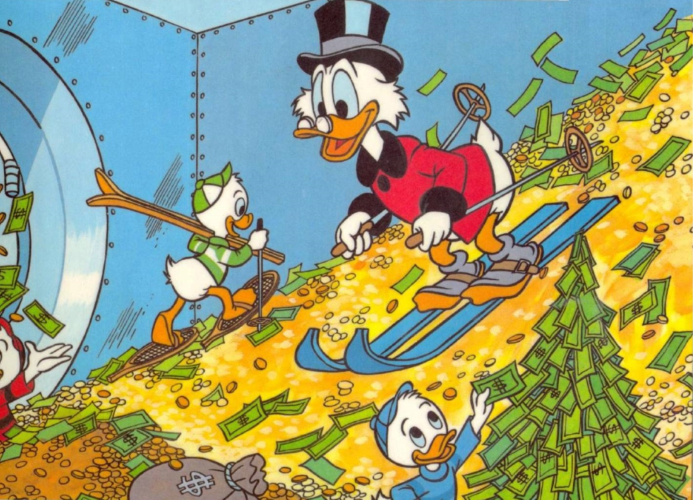Selling rooms at a higher price and maintaining the occupancy rate is possible. To achieve it, hoteliers once followed the example of airline companies and introduced dynamic pricing. Nowadays, any hotel can benefit from it by making an effort and changes.
Dynamic pricing is a complex but the most effective room pricing strategy. We took it to pieces in the “How to make the most of demand by managing hotel rates” article.
In this post, you will learn how to introduce dynamic pricing in your hotel:
Step 1: Analyze data
There are many ways to design dynamic rates, but they are all based on a history of occupancy and competitor prices.
History of occupancy is the statistics on past occupancy rates. It is used to identify time steps — periods when hotel occupancy increased or decreased. Assign price levels to each one of them. A low price corresponds to low occupancy. When the occupancy rate rises, a price goes up as well.
1. Collect data on hotel occupancy.
Pull out information for the last 3 years from the PMS that you use. If you have recently started the business, analyze the occupancy for at least 6 months. In this case, reconsider price levels in 3 months.
2. Define a number of time steps and price levels.
The more time steps you reveal, the better you adjust to market changes. We recommend defining 4-8 time steps so that it is easier to manage them manually. It is common to work out one long time step of low occupancy and set the lowest price for it. For example, the occupancy rate of up to 50%. For every following “step” the price goes up. This may look like this:
| The occupancy rate in % | Price level |
| 0-50 | Price level 1 — the lowest price |
| 50-65 | Price level 2 |
| 66-80 | Price level 3 |
| 81-95 | Price level 4 |
| 96-100 | Price level 5 — the highest price |
3. Make a list of competitors.
When selecting competitors, take into consideration these factors:
- price policy
- location
- star rating
- facilities
- services (SPA, pool, gym, conference hall)
- guest rating
Choose the ones whose factors match yours. A wrong choice of competition will lead to pricing mistakes and a loss of potential income.
4. Choose a reference room.
Reference room is a room category that guests book the most. It is necessary to know it for further analysis.
5. Monitor price changes of the reference room category at competitor hotels.
For each competitor, find the closest room category to your reference room. They should have similar room areas, interiors, and facilities. Write down competitors’ prices for these rooms in a table.
Step 2: Calculate price levels
1. Define the lowest price for the reference room.
This is the least you can charge for a room of this category.
2. Count an average price for the reference room.
Find out a price for this kind of room based on the lowest price and competitors’ prices.
3. Determine an increment.
The increment is a percent by which a price is raised each time the occupancy rate gets higher. For example, the price level 1 is €100, the price level 2 is higher by 10% (€110), while the price level 3 is higher by 10% more — €120.
Choose an increment that is not much higher or lower than the prices of competitors.
4. Calculate the rest of the prices.
Based on the reference price, determine rates, other room categories prices, and occupancy types.
Step 3: Set dynamic rates
Set the prices and rates calculated for TravelLine Booking Engine.
Click on the links to read detailed instructions:
Step 4: Manage price levels daily
Several factors indicate that it is time to change prices:
- Current occupancy rate. The more the occupancy rate, the higher is demand. This is why the price raises as well. For example, airline companies change prices several times a day as tickets are getting booked. The same happens at a hotel. The more vacant rooms there are, the lower the price, and vice versa.
- Prices of competitors. Monitor how they change prices for the coming days to be up to date. Do it automatically with “TravelLine Rate Shopper”. It keeps track of market changes and notifies you if a competitor stopped sales or changed a price for you to adjust the hotel rates.
- Other factors. These can be local events (concerts, festivals, sports games), weather, and even a political environment. It is better to make up an event calendar at the beginning of a year to forecast spikes in demand beforehand.
How to monitor market changes
- On your own. This is free of charge but takes a lot of time. Moreover, you need to understand the techniques of price management.
- Hire a professional. There are few revenue managers, and they charge a lot. Entrust it to a professional, if you are ready to invest.
- Automate. We have created a solution to automatically manage dynamic pricing — “TravelLine Price Optimizer”.
TravelLine Price Optimizer considers season, prices of competitors, and the occupancy rate. It pulls data from a PMS, analyzes it, and gives recommendations. You can manage prices in a manual or an “autopilot” mode.



